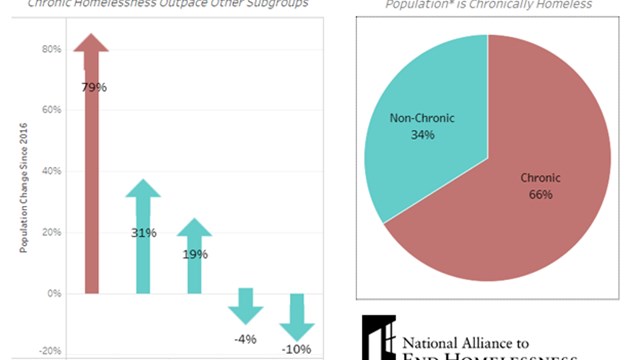The investment represented by your co-op or condo unit is likely your greatest asset—and protecting and cultivating that asset is important, especially in the current turbulent economic times. So why are so many shareholders and unit owners so apathetic when it comes to participating in the decisions that affect their building? And what can boards, managers, and individual residents do to fight apathy and encourage concern and involvement in how their building community is run?
All's Well?
Perhaps apathy is a sign that people feel everything is fine, says Rosemary Paparo of Buchbinder & Warren, a property management firm in Manhattan. Apathy can be interpreted as an endorsement of how the board and management are operating the building, says Michael Berenson, president of another Manhattan property manager, AKAM Associates.
Additionally, Paparo says that some people choose not to join the board because they simply don't think they will be listened to. Paparo, who has served on her own board for many years, believes that people feel if a board has been in place for a long time “it might be a hard circle to break into” and residents may question whether they have anything new to bring to the board.
Further, adds Steven Elbaz of Manhattan-based Esquire Management, some people are also reluctant to serve on boards because they are afraid of being sued. Elbaz points out however that most buildings purchase directors and officers insurance to protect board members from lawsuits resulting from decisions they make in good faith on behalf of the building.
In addition to these issues, serving on the board requires a tremendous amount of personal time, which is rarely appreciated by residents, Elbaz continues. “There are people who just have very busy lives, and one of the main advantages of living in a co-op or condo is that everyone does everything for you. You don’t have to rake the leaves, you don’t have to cut the grass, and many people find that appealing. They also assume some someone else will serve on the board.”
And when there are no building-wide problems and no known construction defects, people become less interested, and thus less involved, says attorney Bruce Cholst, a partner with the Manhattan law firm of Rosen Livingston & Cholst LLP. On the other hand, when there are new projects such as conversions or new construction, interest increases.
“At the first annual meeting interest is very high, and then if there are no problems [that interest] tails off very quickly,” says Cholst. “Usually I see no problem getting a quorum at the second annual meeting, but after that there is a lot of difficulty getting quorums.” Cholst goes on to say that the problem is prevalent especially in newly constructed condos in part because there are many more investment properties and therefore absentee owners. “In the more established co-ops where there have been no apparent problems, involvement also tails off.”
However, Cholst warns that although everything seems fine and there are no perceived problems, and people “seem to accept at face value what their board and management tells them,” there might actually be problems that are not known to shareholders.
A Democratic Model
Sai Nadar joined the board of directors of his 500-unit apartment building on the Upper East Side to meet new people and stay involved with the management of the building. He is involved with his building’s finance committee. Nadar says that more people should look at their building’s financials to see how the numbers are changing, and that everyone should at least go to the annual shareholder meetings and ask questions on their own.
“Since New York co-ops and condos function on a model of democracy,” says Berenson, “residency in a shared interest community should encourage involvement among those who have made an investment, and—typically—live in the property. Additionally, just as in a democracy, owners who have the right to participate, get involved, vote, and make their voices heard in other ways and who choose not to do so, aren’t entitled to complain too much when they perceived things going in a different way from what they might prefer.”
According to Paparo, “everyone in New York works hard,” and does not have tons of time to spare. However, she says, “There’s really an implicit agreement when you buy in to a co-op or condo that you have an obligation to serve on the board.”
“I believe every owner should experience serving on the board. There are obviously people who can’t do it for one reason or another, but by and large the majority of people should serve on the board in their time,” Paparo says. “Whether the apartment was purchased for $300,000 or $5 million, usually it’s an important part of a person’s assets, so you really want to make sure that asset is being cared for as carefully as possible.”
According to Paparo, buildings can greatly benefit from increased shareholder involvement and the diversity it brings. New people invariably bring “new ideas, new perspectives, and new ways of looking at things.” With new involvement, everything from the newsletter to the technology the building uses can be updated and refreshed. Paparo points out that new people bring new methods for accomplishing tasks that the board could not have conceived of if it remained static. “Co-ops and condos are kind of like living things and each one has a certain dynamic and you really don’t want that dynamic to be you know we’ve always done it like this. Sometimes that’s okay, but very often, it could use some improvement.”
Paparo believes that “the best thing that can happen is for boards to get their shareholders and unit owners involved.” And “this means boards have to give up the trust to someone else, which can be a challenge, since entrenched boards usually want to do everything because they think no one can else do it.” However, “You don’t want all the knowledge residing in just a few people” in case a board member becomes injured, ill or resigns.
Communication is Key
So what can boards, managers, and residents do to get people more involved? “I really think that one of the things that is good for buildings is when a real effort is made to change the board on a regular basis,” says Paparo. “So that you always have someone who's been on the board for two or three years or four years, and you have someone that’s coming on new this year and someone coming on new the following year—o you have a constant turnover and you try and involve as many people in the building as you can. After you serve on the board, you have appreciation for what the board is doing, and you also have an understanding of what it takes to make things work. You’ll be more likely to volunteer for a committee, for example. A stagnant board leads to less activity overall.”
Berenson says that he has found that newsletters and committee service “are some of the best ways to combat apathy, cultivate participation, and establish a pool of qualified candidates to tap for board positions.”
According to Elbaz, committees allow people to volunteer for tasks that they like or that applies their personal expertise. For example, a person who is an engineer and wants to stay away from the accounting and politics side of the building can get get involved with the roof repair and provide professional advice. Cholst says that boards should reach out to shareholders and unit owners and encourage them to join committees such as a lobby committee, communications committee, and finance committee.
Paparo has found that committees in Manhattan buildings are in reality usually run by one or two board members “who are the driving force of the committees, so the burden of running buildings really falls on the board.” She also suggests that residents should be encouraged to lead their own committees and take on projects when they have an idea. For example, if a resident says that they think it would be terrific to have a gym in the basement, the board should encourage the resident to form a committee and “become responsible for whatever their idea is and presenting to the board so that it can make a decision.”
Communication is also vital to getting residents interested and keeping them that way. “A property should have a strategically-composed newsletter, ideally distributed monthly or quarterly,” Berenson says. “The newsletter should advise owners of what’s going on with their investment and the actions that the board and management are taking to secure and enhance the value and quality of life in the building. Importantly, each newsletter should advise owners of what particular skills are required for various projects, and should broadcast the opportunity to participate on one or more committees entrusted with various operational issues in the property. Maybe someone in the building has a green thumb and would love to become part of the garden committee. Maybe someone else has a fashion background and would like to help choose new doorman uniforms that have been budgeted for but not purchased yet. And maybe another owner wants to be the newsletter editor and make sure the information gets out to the building in a timely, attractive, and well-written manner. The point is, owners need to know what opportunities to participate are available to them and how they can make a contribution. They can’t be expected to get involved if they don’t know how or when or for what purpose.”
Nadar agrees that communication is key. His building implemented a computerized system that he says has improved communication between shareholders. The system allows shareholders to send messages to the board, and also assists with everyday issues, such as informing residents when they have a package. Nadar says this system has worked out very well for them and has allowed the board to gauge what the shareholders’ primary concerns are. However, getting residents to embrace and make full use of the system was a hurdle at first and his board has found that supplementing the system with paper versions of information for less computer-savvy residents has been helpful. Paparo says that more and more buildings are using websites and find them useful. However, she notes that they take time to monitor and update, and someone has to volunteer to manage the website if the board does not want to pay an outside company.
Entertaining More Ideas
Other ways to combat apathy is “to encourage people to run for the board on a regular basis instead of discouraging opposing candidates,” says Cholst. Another way is “to hold regular community activities so that people think of themselves as a member of a community.”
Nadar, who attends his building’s monthly board meetings, has found the experience to be rewarding and interesting. On a daily basis he stays involved with board matters via email and thinks “it’s good to understand the procedure, what’s being done and why it's being done rather than just being involved in one thing that affects you directly.” Additionally, by serving on the board, one has the opportunity “to interact with people of very different backgrounds and with very different outlooks. Trying to get things done in this context is always a good learning experience," he adds.
“There’s so much involved in being in a city like New York, it’s incredible,” continues Nadar. While Nadar serves on the finance committee, he finds it interesting to get involved with the legal aspects of running the building. For example, he says, “One of the residents complained about the lobby not being ADA-compliant, and our building manager had to appear before a judge and present his case and explain why it was compliant.” Nadar thought the preparation of the case and understanding the issues involved was very interesting.
With all of the benefits that come from increased shareholder and unit owner involvement, the problem of apathy remains prevalent. Paparo recently spoke with someone where “the apathy is to the point where people in the building are treating the board members like they’re the managing agent or the janitor and calling them about problems.”
In the final analysis, the challenge is not getting owners excited about the aesthetics of their common areas or an unpopular assessment – that's easy. The tough part is channeling that interest into the more mundane, though no less important day-to-day operation of the building. Apathy will likely be a problem as long as people engage in group governance and multifamily living, but by keeping residents informed, advising them of how their own special talents and skills can have a positive impact, and letting them know their ideas and contributions are being heard and valued, boards and managers can go a long way toward cultivating an engaged, proactive building community.
Elizabeth Robbins is a freelance writer and current law school student living in New York City.







Leave a Comment